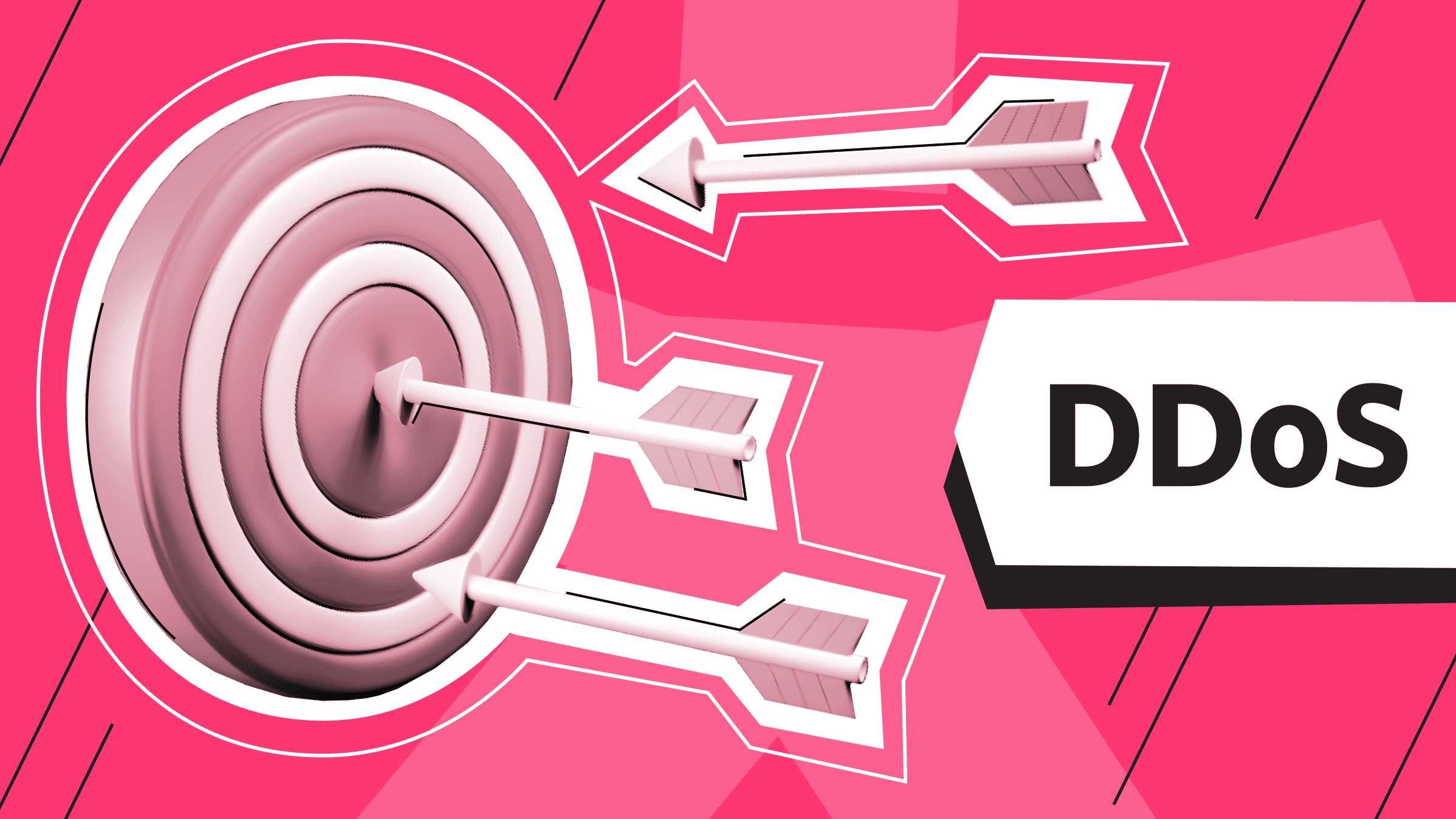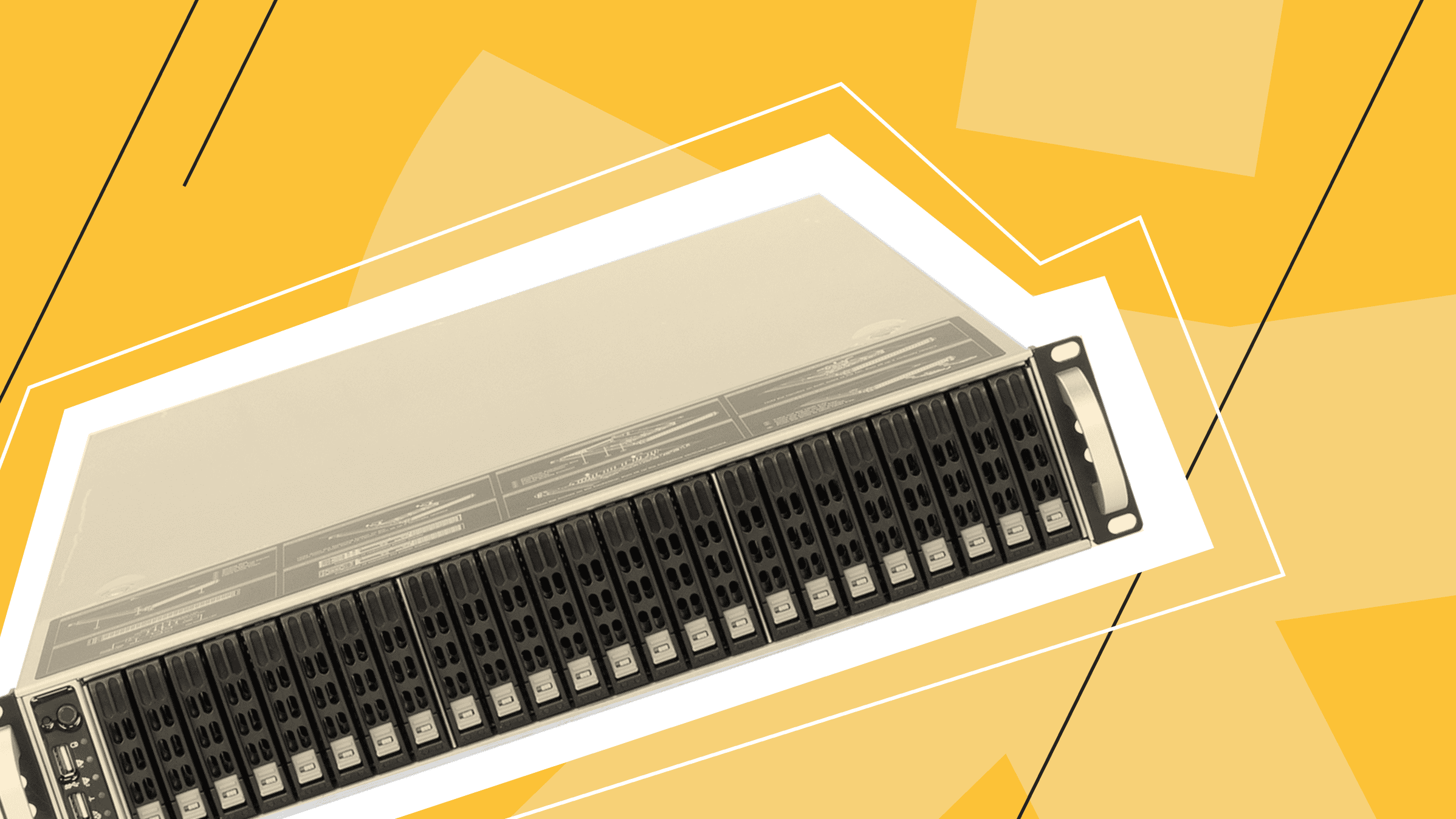
Distributed denial of service (DDoS) attacks are a significant cybersecurity threat. Radware 2024 report claims that malicious web application and API transactions rise 171% driven by layer 7 web DDoS attacks. Additionally, there were approximately 13 million DDoS attacks recently, amounting to an average of 36,000 attacks per day. This data coincides with reports of an increase in the number of DDoS incidents, indicating a growing trend in cyber threats. These attacks can cost organizations an average of $250,000 per hour of downtime, highlighting the critical need for robust prevention strategies. Understanding these attacks and their consequences is critical for both individuals and organizations.
In this detailed guide, we'll cover the basics of DDoS attacks, from their definition to prevention strategies to help protect against this widespread cyber threat.
Understanding DDoS Attacks
To understand the phenomenon of a DDoS attack, it would be appropriate to know what type of cyberattack it is, what DDoS means, how DDoS differs from DoS, and the common misconceptions about DDoS attacks.
What does DDoS mean?
What Is DDoS?
What Is DDoS? A DDoS attack, which includes the term DDoS (Distributed Denial of Service), is a distributed denial-of-service attack that aims to disrupt the normal flow of traffic to a server, service, or network by overwhelming it with Internet traffic. This type of attack uses a "botnet", a group of compromised computer systems that are usually networked together. These systems work together and send too much traffic to the target, causing denial of service to legitimate users due to exhaustion of the target's resources and bandwidth.
Difference Between DoS and DDoS
Denial-of-service (DoS) attacks and distributed denial-of-service (DDoS) attacks aim to do the same thing: block access to a service, network, or server and make it inaccessible to intended users. However, the execution and impact of these two types of attacks are significantly different.
- DoS attacks typically originate from a single source, making them more vulnerable to detection and blocking. Identifying and filtering the criminal's traffic can help prevent this attack.
- DDoS attacks occur from multiple sources, often scattered across the globe, making it difficult to detect and mitigate. DDoS attacks can generate vast traffic and overwhelm reliable networks and services. The diversity of sources complicates protection mechanisms, making it difficult to distinguish between legitimate and malicious traffic.
Get the most out of your budget with our affordable, efficient VPS solutions. Fast NVMe, 30+ countries, managed and unmanaged VPS.
Common Misconceptions
There are several misconceptions regarding DDoS attacks:
- Many people believe that performing DDoS attacks requires complex technical skills. Although experienced attackers carry out some sophisticated DDoS attacks, various DDoS tools are readily available on the dark web, allowing even inexperienced users to launch an attack.
- Another misconception is that only large organizations or well-known websites can be targeted by DDoS attacks. Any business of any size can fall victim to these attacks. Because small and medium-sized enterprises (SME) frequently lack the robust security measures that larger companies have, they become increasingly vulnerable targets for attacks.
- Additionally, some believe that robust firewalls are enough to prevent DDoS attacks. However, more than firewalls are needed, as they can be overwhelmed by the sheer volume of traffic generated during a DDoS attack.
Understanding these nuances is critical to implementing effective security measures to protect against the ever-evolving threat of DDoS attacks.
How Do DDoS Attacks Work?
In the following sections, we will discuss DDoS attacks and how they work, particularly their mechanisms and types.
Mechanisms of DDoS Attacks
DDoS attacks use multiple compromised devices, often called botnets, to flood a target with massive amounts of traffic. These devices can include anything from computers to IoT gadgets compromised by malware. Once under the control of an attacker, these devices send a massive volume of requests to the target, draining system resources and preventing legitimate users from being served. Attackers can amplify attack traffic in various ways, such as reflection and amplification attacks that exploit vulnerabilities in Internet protocols.
What are Some Common Types of DDoS Attacks?

Types of DDoS attacks include:
- Volume-based attacks.
- Protocol attacks.
- Application-level attacks.
Volume-Based Attacks
Volume-based attacks, or “floods,” aim to overload the target network or service's bandwidth with massive data measured in bits per second (bps). Standard methods include UDP flooding, ICMP flooding, and other spoofed packets. These attacks occur because network channels are clogged with large amounts of traffic, making it difficult for regular traffic to reach its destination.
Protocol Attacks
Protocol attacks are measured in packets per second (pps) and aim to exploit weaknesses in network protocols. They consume real server resources or intermediate communications equipment such as firewalls and load balancers. Examples of such attacks are SYN flood, Ping of Death, and fragmented packet attacks. Protocol attacks often exploit the protocol to process large, seemingly legitimate requests, forcing the target to commit resources until they are exhausted.
Application-level Attacks
Application-level attacks, called Level 7 attacks, target the Open Systems Model (OSI) application level. These attacks are measured in requests per second (RPS) and aim to block specific functions of an application, dedicated servers or virtual private servers. HTTP flooding, Slowloris, and DNS queries are common examples of application-level attacks. Because they simulate real user traffic and aim to drain server resources at the application layer, application-layer attacks are more difficult to detect than volume-based and protocol-based attacks.
Understanding the mechanisms and types of DDoS attacks is critical and helps in developing effective defense strategies. Each attack exploits different vulnerabilities, requiring a multifaceted approach to detection and mitigation in order to protect network infrastructure and maintain service availability.
7 Stages of a DDoS Attack

In the following sections, we will describe in detail the stages of a DDoS attack and what each stage entails. A DDoS attack consists of the following stages:
- Stage 1: Exploration
- Stage 2: Weaponization
- Stage 3: Delivery
- Stage 4: Exploitation
- Stage 5: Installation
- Stage 6: Management and control
- Stage 7: Actions on targets
Now, in detail about each stage.
Stage 1: Exploration
Exploration is the process of gathering information about a target. Attackers discover vulnerabilities, analyze the network topology, and study existing security measures. This step is crucial because it helps attackers develop a more effective attack strategy. During this phase, techniques such as area mapping, network scanning, and port scanning are typically used to create a map of the target's infrastructure and identify potential weak points.
Stage 2: Weaponization
During the weaponization phase, attackers create or acquire the tools necessary for a DDoS attack. This often involves developing or obtaining malware in order to compromise devices and create a botnet. The tools of this malware range from simple scripts to complex malware designed to control multiple devices. In addition, attackers also choose the type of DDoS attack they will use. They can use volume-, protocol-, or application-level attacks.
Stage 3: Delivery
The delivery phase involves deploying the malware or DDoS tool on the target devices, which will later be used to launch the attack. DDoS attacks can be launched by various means, such as phishing emails, exploiting software vulnerabilities, or using malicious websites to infect devices. The goal of this phase is to silently compromise as many devices as possible without alerting users or security systems.
The ideal solution for large-scale projects. Impeccable protection, high performance and flexible settings.
Stage 4: Exploitation
During exploitation, attackers activate malware on compromised devices, making them part of a botnet. These devices are now under the attackers' control and can generate traffic for a DDoS attack. The exploitation phase often bypasses security measures and allows malware to communicate with command and control servers.
Stage 5: Installation
Installation is the stage where malware attaches itself to compromised devices. This malware ensures persistence by changing system settings or using rootkits to remain hidden and functional. The software also establishes communication channels with command and control servers, allowing attackers to issue commands and control the botnet.
Stage 6: Management and Control
During the management and control phase, attackers contact the botnet to coordinate a DDoS attack. Attackers use command and control (C&C) servers to send instructions to compromised devices, dictating when and how to launch an attack. The management and control infrastructure can be centralized or decentralized, with some attackers using peer-to-peer networks to avoid detection.
Stage 7: Actions on Targets
Actions on targets are the final stage when the actual DDoS attack is carried out. The botnet is commanded to start generating traffic towards the target, flooding it with requests and overloading its resources. Depending on the attackers' goals and the target's strength, an attack can last for hours, days, or weeks. At this point, attackers can also monitor the effectiveness of the attack and make adjustments to maximize impact by switching attack vectors or amplifying traffic.
Understanding these steps allows you to anticipate and counteract DDoS attacks better, improving your overall cybersecurity posture.
Impact of DDoS Attacks

DDoS attacks affect systems to varying degrees. Such attacks can have serious consequences and negatively impact the overall business. They overload target systems, causing significant downtime and service interruptions. This leads to financial losses, reputational damage, and operational disruptions. In the following sections of our article, you will learn about the impact of DDoS attacks and possible consequences.
Effects on Target Systems
DDoS attacks overload target systems with excessive traffic, resulting in severe performance degradation or service outages. This can make websites, applications, and entire networks inaccessible to legitimate users, disrupting normal operations and causing significant downtime.
Consequences for Businesses
The business consequences of DDoS attacks are significant. Financially, DDoS attacks can result in significant losses due to service interruptions, revenue loss, and mitigation costs. Moreover, prolonged downtime can damage a company's reputation, eroding customer trust in the brand in the long run. If service outages violate regulatory requirements, businesses may also be fined.
Actual Examples of DDoS Attacks
Notable DDoS attacks include the 2016 Dyn attack, which disrupted significant websites such as Twitter, Netflix, and Reddit and targeted DNS provider Dyn.
Another example of a DDoS attack was the attack on GitHub in 2018, which temporarily shut down one of the world's largest code repositories.
An interesting incident occurred on September 15, 2012, when CloudFlare, a content delivery network for shared hosting, was hit by a significant 65 Gbps DDoS attack. Previously, this company withstood DDoS attacks with a capacity of several tens of Gbit/s but could not cope with an attack of 65 Gbit/s. CloudFlare employees who used to work as hackers were very interested in learning how this DDoS attack was carried out and how the attackers could carry it out with such power. It turned out that such an attack was carried out by multiplying DNS queries through open DNS servers.
The largest attack prevented in 2024 was launched by a botnet like Mirai. This attack targeted an Asian hosting provider that was protected by Cloudflare Magic Transit and reached speeds of 2 Tbps. Cloudflare instantly helped: automatically detected and responded to the attack.
High-profile examples of DDoS attacks like these highlight the serious and widespread impact of DDoS attacks on digital infrastructure.
DDoS Attack Tools and Methods

There are various DDoS attack methods and tools that create vast volumes of traffic by leveraging multiple compromised systems. Techniques range from volumetric attacks that overload bandwidth to application-level attacks that target specific aspects of applications to protocol attacks that exploit weaknesses in protocols such as TCP/IP.
- Botnets in DDoS.
DDoS attacks often use compromised device networks controlled by attackers, known as botnets. Due to the massive traffic volume, they exceed targets and cause service disruptions.
- Commonly used DDoS tools.
For DDoS attacks, attackers use both general tools LOIC (Low Orbital Ion Cannon) and HOIC (High Orbital Ion Cannon) that are user-friendly and widely available, as well as tools that create powerful botnets and that specifically target IoT devices (Mirai).
- New DDoS methods.
New techniques, such as DNS amplification, increase attack traffic through amplification and reflection. In addition, attackers are increasingly using multi-vector attacks, combining different DDoS methods to bypass protection and maximize impact.
DDoS Protection and Mitigation

Robust defense and mitigation strategies and tools are needed to protect online services from increasingly sophisticated distributed denial of service (DDoS) attacks.
Strategies for DDoS Mitigation
Practical strategies to prevent DDoS attacks include proactive and reactive measures. These include traffic filtering, rate limiting, and the use of intrusion detection systems to identify and block malicious traffic. Regular security audits and updating network defenses are also crucial in DDoS mitigation strategies. Regular security audits are necessary to identify vulnerabilities before attackers can exploit them. The audit should include load testing of the network infrastructure, software updates, and verification of security policies. Proactively addressing identified weaknesses helps maintain strong protection against potential DDoS attacks.
Tools and Technologies for DDoS Protection
Various DDoS protection tools and technologies are available. The main DDoS protection tools are:
- Web Application Firewall (WAF).
- Load balancers.
- DDoS protection software.
You can also use specialized services to prevent DDoS attacks. Professional DDoS protection services offer specialized expertise and advanced attack prevention techniques. Companies like Cloudflare, Akamai, and Arbor Networks provide comprehensive solutions, including traffic analysis, real-time monitoring, and automated threat response. Using these services ensures that businesses are prepared to defend against even the most complex DDoS attacks, maintaining service availability and protecting critical assets.
Role of ISP and Cloud Providers
Internet Service Providers (ISP) and cloud providers are critical in preventing DDoS attacks. They offer infrastructure-level protection, including traffic scrubbing and Content Delivery Networks (CDN), which distribute traffic across multiple servers, reducing the impact of attacks. Some cloud providers' extensive resources and expertise are critical to protecting against advanced DDoS threats.
is*hosting is a great example of a VPS with DDoS protection.
Conclusion
Future DDoS attacks will likely become more sophisticated, using artificial intelligence and the growing number of Internet of Things devices. Understanding DDoS attacks and their consequences will help develop effective defense strategies. Organizations can protect themselves from these devastating cyber threats by implementing strong security measures, staying current with the latest mitigation techniques, and partnering with trusted internet service providers, cloud providers, and cybersecurity firms.
VPS
Choose the suitable configuration and enjoy all the benefits of a virtual private server.
From $5.00/moSupport 24/7
Rely on us. is*hosting tech support is available 24/7 and responds to all customer requests.
More![DDoS Protected VPS Hosting: How to Set It Up Yourself [Guide]](https://blog.ishosting.com/hubfs/blog/how-to-setup-ddos-protected-vps-hosting/how-to-setup-ddos-protected-vps-hosting.png)

